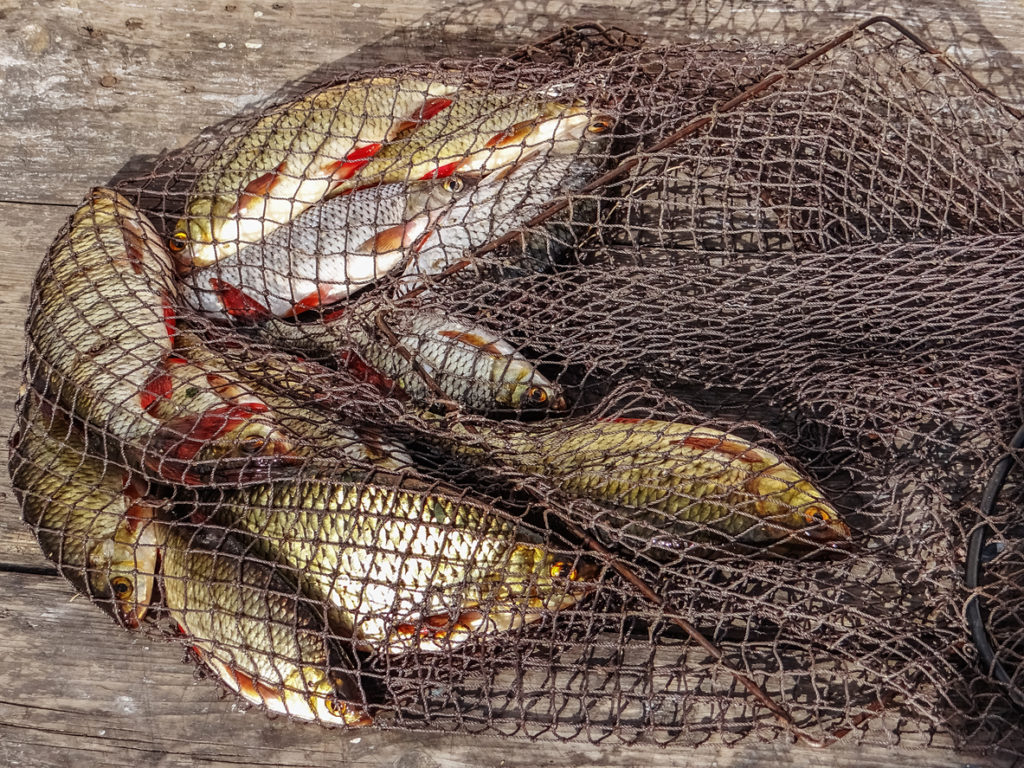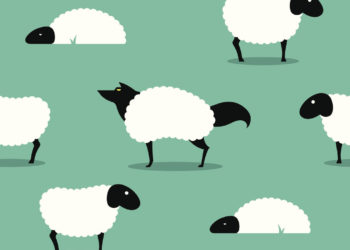Editor’s Note: Today’s Guest Post comes from Phaedra Cress, Executive Editor, Aesthetic Surgery Journal.
Are we losing good articles to predatory journals, with little recourse for unsuspecting authors? Or are authors becoming increasingly complicit and symbiotic in their relationships with illegitimate publishing entities with disregard for the greater good? Maybe it’s both.
Predatory publishing can no longer be called an aberration or a fly in the chardonnay of scholars. In less than ten years, it has wreaked havoc on unsuspecting researchers and academics (more about how they might not be as naïve as you think, later in this article). Rick Anderson recently discussed the issues around so-called predatory publishing (here and here).

But what happens when — and what are the ethics surrounding — an author accidentally submitting to a predatory journal, realizing the error, then trying to submit to a legitimate academic journal? The Committee on Publication Ethics (COPE) posted advice in 2016 based on the following case:
An author received an invitation and submitted a paper without realizing the journal was predatory in nature. When she realized her error, she asked the journal to remove the article from its website. Despite her reticence to sign a copyright form or pay the publication fees, it remained published on the website, therefore hindering her from submitting to a quality scholarly journal — as it would constitute duplicate publication.
After explaining the situation to the editor in chief of the legitimate journal, the submission was permitted. COPE gave this advice:
The Forum agreed with the advice of the former editor-in-chief. As there was no copyright transfer, the paper could be published in the legitimate journal, ideally with an editorial note on the paper explaining what has happened. Otherwise, the author may have to write off this paper to experience and lessons learned. The Forum noted that this case highlights the importance of the Think.Check.Submit. initiative, which provides tools to help researchers identify trusted journals for their research. Another suggestion was to threaten legal action — the predatory journal may back down if legal action is threatened.
How much knowledge and wherewithal do authors have when it comes to predatory publishing and what resources are they consulting when instances like this occur? Can we blame the meteoric proliferation of academic journals in and of itself? Decades ago, authors knew all the high-impact journals in their specialty because there were fewer. They have not been trained to think in terms of real vs predatory. Reports indicate there are approximately 30,000 academic journals being published, plus another 10,000 predatory journals. If an apparent 25% of all journals being published are predatory, we’re going to need reinforcements. We’re fighting an enemy who wants blood in the form of currency — and we need to step up our game.
Ruth Bueter, Serials Librarian, Himmelfarb Health Sciences Library at George Washington University, and Tami Ritsema, Assistant Professor, Department of Physician Assistant Studies, George Washington University, published a 52-minute informative WebEx called, “What you Don’t know Can Hurt You.” Bueter details her daily plight combating predatory entities as she manages the electronic journals collection and regularly investigates the legitimacy of journals that invite her faculty to publish. Bueter and Ritsema state:
From a mentorship perspective, this is a great opportunity when you start talking with someone about their projects, to help them think about and write toward their target journal. When we mentor, if we train them to enter into that discussion right away, as soon as the research design phase is completed, it is a long-term service to authors.
Many Scholarly Kitchen readers are in a position to mentor authors, whether it is directly, during contact with authors, or indirectly through education to editorial boards. Educating and mentoring authors on the front end is the first step toward equipping them with the information and resources they need to make smart decisions. I was recently with Scholarly Kitchen Executive Editor David Crotty, PhD, Editorial Director, Journals Policy for Oxford University Press at their recent Oxford Journals Day event, and he suggested, “Don’t submit your paper to a journal you don’t (or wouldn’t) read.” This could be expanded to include journals for which you review or have already published. To the extent we are able, we should help authors keep this seminal rule in mind.
Offering student training and mentorship about the pitfalls of predatory publishing earlier may help fill the educational gap down the road, but what about right now? We publishing types are still debating the semantics of nomenclature, saying “predatory publishing” is the wrong terminology because it implies a one-way relationship. Some argue that “illegitimate publishing entities” may be a more appropriate term because some authors are knowingly collaborating, due to publish or perish pressures within academia. Alice Meadows wrote about this in detail in her recent post.
Are universities then complicit if they knowingly turn a blind eye and allow faculty to publish in illegitimate journals vs holding them to higher standards? Derek Pyne sounded off about just that when he observed the phenomenon at Thompson Rivers University in British Columbia, Canada. Editors in Chief have blacklisted authors who commit ethical offenses. Should universities and journals create author blacklists to affirm a zero tolerance policy for those who willingly choose to publish in predatory journals?
Unethical publishers are doing unsavory such as manipulating authors and using their names without permission on editorial boards and websites to imply legitimacy toward their operations. Why isn’t the information that’s available enough to prevent authors from making devastating mistakes?
For authors caught in the net, blocking publication is perhaps the best recourse to ensure re-submission to a legitimate journal. Abandoning the article becomes a loss within the scientific literature. At the same time, authors should not re-submit without insisting the predatory journal remove the work. This assumes that an author has not signed a copyright transfer or paid any fees for publication. Once an author approves of publication, little can be done to remove it from a publisher website.
There are easy steps authors can take to avoid getting caught in the net in the future:
- Do the homework (while this should’ve prevented submission in the first place, it will still help authors know what and who they’re up against);
- Consult Think-Check-Submit and the COPE websites for advice and flowcharts.
- Search for other complaints against the predatory entity; tips and resolutions may reveal themselves;
- Nobody likes to revise, but flattery (and a large ego) can lead an author astray. Question invitations that seem too good to be true or come from someone unknown. Dr. Kim Barrett had some helpful thoughts on this topic;
- Only submit to a journal you read, review for, or have published in before;
- Set up Google Alerts to be notified if/when your work appears or is referenced in a predatory publication so you can pursue removal or retraction;
- Use social media to share your story with colleagues so they avoid making the same mistakes;
- Consider Justice Potter Steward’s famous quote, “I know it when I see it” in attempting to determine what predatory is or is not. In the words of a dear Lithuanian friend, it’s generally easy to tell because “the fish stinks from the head down.”
- A lack of indexing, Impact Factor, and professional websites is a red flag. Many predatory journals claim to be indexed. This can be confirmed by looking them up in the Clarivate JCR database, in Web of Science, and in Scopus;
- Consider legal action if the predatory entity will not remove your publication;
- Reach out to editorial board members and authors who’ve published in a questionable journal to ascertain legitimacy. If they don’t reply or are unaware they’re listed as an editorial board member, consider it a huge red flag.
- Mentor those who come after you to avoid perpetuating the problem;
- Be suspicious of invitations from someone you don’t know, particularly those feigning a US-based address with poor grammar and non-English colloquialisms that invite you to write, present in Asia or Africa, or join an editorial board.
Additional resources that may be helpful, particularly in training student researchers or junior staff include the Himmelfarb Research Guide; the Principles of Transparency and Best Practice in Scholarly Publishing available from COPE; and the ISMTE discussion forum.
Because of the proliferation of predatory journals and publishers and how they’ve tarnished the reputation of legitimate open access journals — to the extent that some erroneously consider them synonymous, it’s clear that awareness of these guidelines and strategies must be improved to help authors and editors unravel these ethical issues to avoid a gluttony of new retractions and lawsuits.
The Federal Trade Commission (FTC) has organized a website for those who are looking for recourse or who want to report related mishaps here and provides more information. Additionally, I wrote about predatory conferences and the FTC legal battle against OMICS.
This research has prompted me to contemplate the following related topics you may find educational and even entertaining:
- If a senior author allows submission to a predatory journal and is so far removed from the co-authorship process, are there farther-reaching and iterative ethics issues resulting from predatory publishing?
- Jeff Beall’s list is still available via archive.
- Consider a subscription to Cabell’s whitelist and whether or not placing your journal on the list is necessary.
- Non-stop spamming has become a public nuisance, but it is also a mechanism by which authors can identify potentially predatory entities. Consider sharing these messages with younger academics in the spirit of education and mentorship.
- Authors may be faced with having papers in predatory journals that then go away. What will the response be from publishers if an author wants to try again in a new journal?
- Faculty pressure to publish should not be an excuse to take shortcuts and publish in predatory journals.
- Sting operations are not novel, but here I’m sharing a few of my personal favorites ranging from “Please remove me from your f***ing mailing list” to Star Wars and Seinfeld spinoffs to an article written entirely by iPhone iOS’ autocorrect that was accepted.
How Can the Publishing Community Help?
Perhaps it’s time to convene an international conference with the National Library of Medicine and relevant ethics organizations including COPE, WAME, ISMTE, SSP, and top-tier STMS publishers to address these issues and unite efforts to combat all illegitimate entities and reclaim the integrity we know exists among honest journals and publishers.
If we don’t commit ourselves to change now, an Australian dog named Ollie is likely to have puppies who will replace him on the 7 editorial boards on which he sits, when his terms expire.
NB: Despite the exposure of this sting, Ollie continues to serve as Associate Editor of Global Journal of Addiction & Rehabilitation Medicine.
Discussion
24 Thoughts on "Guest Post: When Authors Get Caught in the Predatory (Illegitimate Publishing) Net"
Thank you for mentioning mentoring. I’d just like to do a little plug here for mentoring early-career researchers in the Global South through the AuthorAID project – see http://www.authoraid.info/mentoring for anyone interested in being a mentor or a mentee. I work for INASP, the NGO that runs the AuthorAID project, but I also volunteer as an AuthorAID mentor and I can testify from my own experience how rewarding it is and how much I gain from it. Where to publish is a common question that gets raised.
Thank you for the comment Siân and for providing more information about AuthorAID. Mentoring at the early stages of the publication process is a good start toward combating illegitimate publishing practices. Keep up the great work!
Why did you neglect Quality Open Access Market (www.qoam.eu)? QOAM is a market place with 24.000 open access and hybrid journals. Calibrated quality judgement of the journals (not the articles) is based on academic crowd sourcing. Libraries complete Base Score Cards about the transparency of a journal’s web site with respect to editorial information, peer review, governance and workflow. Authors share their experience with a journal via Valuation Score Cards. Thus, QOAM materializes the Think, Check, Submit approach.
Hi Leo, thank you for mentioning QOAM. The crowd sourcing approach is worthy of mention, thank you, and perhaps it is good fodder for another post in the Kitchen.
Thanks for sharing this with readers.
The pressure to publish is immense, worse in some Asian countries. If they can build a publication record in a predatory journal(s) they can state they have XX numbers of publications, this may give them some legitimacy and acknowledgement of their “expertise” in other circles? E.g., many western author CV’s also state “has authored over 200 publications” as a form of validation.
In parts of Asia promotion, rewards and grants are based on such criteria, so how do we discourage this behaviour?
Yes, I believe this is happening and I wrote a bit about it here: https://scholarlykitchen.sspnet.org/2017/10/05/turning-critical-eye-reference-lists/. My focus was on authors boosting their own citations and in some cases, using questionable journals. The paper we found had well over 50 self citations and many were to the author’s papers in predatory journals. I would like a way to check reference lists more closely but that does not answer your question 100%.
There were also issues in India where the government proclaimed that publications in certain journals would not be considered when reviewing grant applications and promotion. The problem with their rule was that it basically considered all OA journals with an APC as not counting.
30,000 “trust worthy” journals and 10,000 “predatory” as noted in the article.
Gives one pause for reflection
Indeed, Tom! I am not looking forward to seeing the inversion of those numbers and hope it doesn’t come to that. Thanks for reading.
Hi Phaedra
The compilation of comments and the recent two part article on this blog on workflow and the potential problems with smaller publishing houses may point to the potential of your worst nightmare. Consider:
a) Workflow, preprints, etc all point to the idea that an “academic journal” is a gateway to getting research into the public sphere. With QOAM and other post publication reviews, particularly with increased capabilities of Watson and its off-spring might imply that whether the article gets into circulation via one of the 30,000 or one of the 10,000 starts to become moot or at best like a star for being listed in Orcid. In other words, the fears for small publishers in light of Elsevier and others may also be visited on the larger houses also.
b) Think, as with Uber, Airbnb which initially were seen as “predatory” in their niche, and also small journals that may publish materials not acceptable to the prevalent “theory” (think the rise of post autistic economics- heterodox economics) and thus be seen as “predatory” or less than legitimate by reviewers, combined with “a”
c) Think back when small, lacking in quality, cars came from Japan, and think of the comments here about struggling researchers in developing countries not affording the cost to be accepted in the “legitimate” big two or 3 in the academic publishing area
Then, the 30,000 to 10,000 may become moot, particularly as intelligent search engines, pre and post publication reviews become tools available to all at the click of a mouse. If one may look at what tools are increasingly accessible to students in primary and secondary schools through university level, what was once accessible to researchers starts to filter down.
Again, as with Uber, etc, small cars and now predatory publishing, there may be cracks in the walls of the Ivory Tower.
Dear Tom,
You’ve given us even more to think about in this context, thank you. I can appreciate the parallel you’ve drawn re: Uber and as that business model has evolved, it has revealed some cracks and regulatory issues that needed correction. Not everyone (eg, yellow cab drivers) were excited to be outbid by inexperienced weekend warriors just looking to make a buck. I don’t want to stray too far from your analogy but I will say that as an avid Uber user for more than 5 years in many US states, my experiences and the quality of service have varied greatly. I’ve even encountered situations where I was concerned for my own safety. If we think about this from an author’s perspective, it translates: by the time you figure out you’ve sent your work to a predatory journal, you begin fearing for it’s safety, wondering if it will ever really get published, and regretting your choice.
Thanks again for your thoughtful comments.
A hypothetical, if I may. If a good author publishes a solid piece in a predatory or illegitimate or misleading publication, does that make the journal less predatory? This assumes that the paper is indeed published and is openly available on the Web, where it is indexed by Google and passed around through social media. Isn’t the definition of an illegitimate journal (not sure that is the best term) one that does not publish any good papers–and misleads authors to think that it does? But if it publishes some good papers, well, where are we?
I suspect that there are some “good”, or at least valid papers published in “illegitimate” journals. As we know, there’s some percentage of authors who are deceived or naïve and choose a less reputable outlet for their work. But that doesn’t change the fundamental nature of the journal if they’re practicing deceptive actions and lying. It also means that the “good” paper should be treated with the same skepticism as a preprint, as it may not have seen any peer review.
Personally, I wouldn’t say that it’s essential to the definition of a predatory/illegitimate journal that it never publish good papers. I’m sure there’s legitimate science out there among the output of scam journals, just as there’s crap science out there among the output of good journals. What makes a journal a predator (or a deceiver or a scammer or illegitimate) is if it seeks to deceive authors, or readers, or both, about the way in which it does business. Specifically, the deception usually has to do with peer review (which the journal promises, but doesn’t provide), or impact factors (which the journal lies about), or organizational affiliations (ditto), or editorial board membership (ditto). Lying about some or all of those things doesn’t guarantee that your journal will never publish legitimate scholarship, but it does undermine the legitimacy of your journal as a business and as a trustworthy platform for scholarly publishing.
I would say that the definition of illegitimate publishers has to be about the process, not the output. If an author sends a stunningly good paper to a bad journal it doesn’t change the attitude or character of whoever is running the publishing operation. Similarly, most legitimate publishers with a large volume occasionally let one slip through the net. The problem is that it can be very difficult to diagnose from the outside, since peer review and editorial processes are conducted confidentially and we need to either rely on the judgement of third parties (DOAJ, QOAM, Beall) or use a proxy (quality of the Editorial board, previously published papers).
Missing from the list of resources: talking to librarians.
As Shea Swauger articulated incredibly well in a recent College & Research Libraries News column, the spectre of illegitimate or predatory publishers is nothing more or less than an information literacy issue. Information literacy is a core disciplinary specialty of academic librarians, and libraries have many, many experts and resources which can help scholars (both students and faculty) build the information literacy skills to make informed publishing choices.
Matt, you’re absolutely right. And while I did reference librarians’ comments about mentoring which we know happens regularly, I did not explicitly state that having a conversation with these professionals is always a good idea. I agree with you that it is. Thanks for sharing the work by Swauger. There are many moving parts to predatory publishing as you are already aware and the most appropriate actions steps are always going to be dependent on one’s goals and objectives (author/review/editor/academician/librarians) etc. Many of these groups can benefit from the expertise of academic librarians who have these literacy skills.
FWIW Phaedra, it might have missed your scan here, that there is a community curated list of good open access journals called the Directory of Open Access Journals (www.doaj.org). After what we hear, DOAJ is doing quite a good job in keeping illegitimate journals out. We handle 500 applications per month, rejection rate 60%. BTW: DOAJ is free to use for all, and DOAJ is co-founder of ThinkCheckSubmit and has published the Principles of Transparency and Best Practice in Scholarly Publishing in collaboration with COPE, OASPA and WAME.
Lars, I do appreciate the good work done by the DOAJ and in fact just quoted some of their OA statistics in another project on which I am working. You’ve pointed to one of the takeaways of the article—there is no shortage of information and resources available, but it is the broader educating and sharing with our community that is going to push the needle ahead. Thanks!
Here’s an updated link to the Predatory Publishing: What You Don’t Know, Can Hurt You talk you mentioned in this post (it opened with the dreaded 404 Not Found error message): https://youtu.be/7nedlYWFHKg
Also, a link to the Predatory Publishing page of Himmelfarb’s Scholarly Publishing guide: http://libguides.gwumc.edu/scholarlypub/predatory_publishing
Do the views by Phaedra Cress also represent the opinions by Oxford University Press?
Please see our “About” page:
https://scholarlykitchen.sspnet.org/about/
“Opinions on the Scholarly Kitchen are those of the authors. They are not necessarily those held by the Society for Scholarly Publishing nor by the authors’ respective employers.”
And to be clear, Cress is not an employee of Oxford University Press.
David, thank you so much for that important clarification. Allow me then to rephrase my question: does Oxford University Press agree and/or align with the views and positions held by Phaedra Cress in this interview, given that she is the Executive Editor of a journal published by OUP?
https://academic.oup.com/asj/pages/Editorial_Board
Phaedra makes some very important claims, and even though this TSK disclaimer exists in the “About” page, many readers and OUP journal authors would probably like to know OUP’s position on the issues raised by Phaedra.
Neither the Scholarly Kitchen, nor the SSP acts as a spokesperson on behalf of individual publishing houses. You would need to contact the publisher directly:
https://global.oup.com/contact_us/uk/



